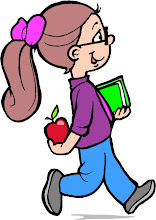- We started reading Little Pilgrim's Progress. K. is enjoying it, but she wishes the chapters were longer. One day she said, "Is that all? I want to know what happens to Little Christian."
- "We serve one another, humbly thinking of the needs of others first" is #6 from Our 24 Ways. We were able to talk about what that looks like in some real life situations this week.
- This week we read Genesis 15 - 21. K. colors some coloring pages that go along with the stories we are reading and sometimes I wonder how much of the story she absorbs. Friday evening K. wanted us to eat dinner under the sheet "tent" in her room. She asked me if I wanted to be Abraham, Sarah, or Lot. I chose Sarah. When Papa got home K. told him he was Lot and handed him two Raggedy Ann dolls. She said, "Here, Lot had two daughters." My husband and I gave each other an "uh oh" look, but that was as far as she went with that story.
- We learned some ways to be a good listener so we can be a good friend (Being a Good Friend).
- This week Life Lessons was talking about purity (keeping your body pure). I thought K. would ask what that meant, so I had what I wanted to tell her written out. On Wednesday I read Mrs. Rosey-Posey and the Chocolate Cherry Treat (by Robin Jones Gunn) and we talked about keeping your life pure. Below is what I shared with K. about purity.
- Besides reading the verses that went with Catechisms #12 and #13, we looked the words infinite, eternal, and unchangable up in the dictionary.
When a man and woman marry, their bodies are special gifts they give to each other. You know that Papa like to hug, kiss, and hold me. I like to hold, kiss, and hug him. And we like to hold hands. Saving your hugs kisses, and special touches for your husband keeps your body pure.
There is also purity of life. It is being set apart for God's use, staying away from sin, living a life that brings joy to God. Another area of purity is our thoughts. If we think about sinning, are our thoughts pure?
Right now it is Papa's and my responsibility to help you keep your body pure and to teach you what is right and best. But one day you will be grown, and it will be up to you to keep your "kiss" for your husband.
While you are young Papa and I help you learn to keep your life set apart and pure for Jesus. One day you will make your own choices about how to live.
I am helping you to memorize scripture to help you keep your thoughts pure. When you think about God and His Word, there isn't room in your mind for sinful thoughts.









































